Ivan Sergei
Mira Str.40-2, 222307, Molodechno Belarus
astroseriv@yandex.by
Abstract: This article presents the results of radio observations made in October and November 2021. The results of the radio observations are compared with the CAMS video network summaries.
1 INTRODUCTION
The observations were carried out at a private astronomical observatory near the town of Molodechno (Belarus) at the place of Polyani. A 5 element-antenna directed to the west was used, a car FM-receiver was connected to a laptop with as processor an Intel Atom CPU N2600 (1.6 GHz). The software to detect signals is Metan (author – Carol from Poland). Observations are made on the operating frequency 88.6 MHz (the FM radio station near Paris broadcasts on this frequency). The “France Culture” radio broadcast transmitter (100 kW) I use is at about 1550 km from my observatory which has been renewed in 1997.
2 Automatic observations
October is a fairly quiet month with an average number of about 30 signals per hours. A very weak peak around October 10 may be related to STA activity (#0002). Some enhanced activity was detected in the period of October 20–22 due to the Orionid maximum (#0008). Another period with higher activity appeared around October 29–30 and may be explained by some increased activity produced by a number of minor showers, as well as an increase in the number of observed meteor showers themselves (see the CAMS data section). According to the IMO meteor calendar, the OCT (#0281) and DRA (#0009) meteor have their maxima on October 5 and October 8. However, no trace of any peak activity can be seen in the graph. No peak activity for these showers occurred, or it remained hidden in the sporadic background of meteor signals.
The first half of November showed a very quiet meteor activity at about 15–18 signals per hour on average. The second half of the month was more active when the average number of signals increased to 30 per hour. The graph shows three periods of activity: November 1–13, November 14–22, November 23–30. The blurred Leonids maximum happened during the second period and is not very pronounced. The maxima of NTA (0017), November 12, AMO (#0246), November 21, NOO (#0250), November 28 were not resolved due to the weak activity of these showers, hidden in the sporadic background.
Figure 1 shows the hourly rates of radio meteors in October 2021 recorded at 88.6 MHz. Figure 2 shows the hourly rates of radio meteors in November 2021 at 88.6 MHz. Figures 3 and 4 show the corresponding heat maps.
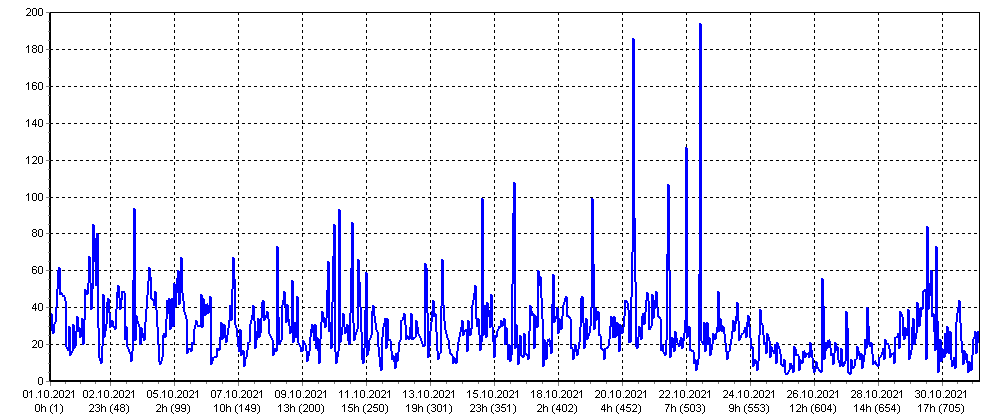
Figure 1 – Radio meteor echo counts recorded at 88.6 MHz during October 2021.
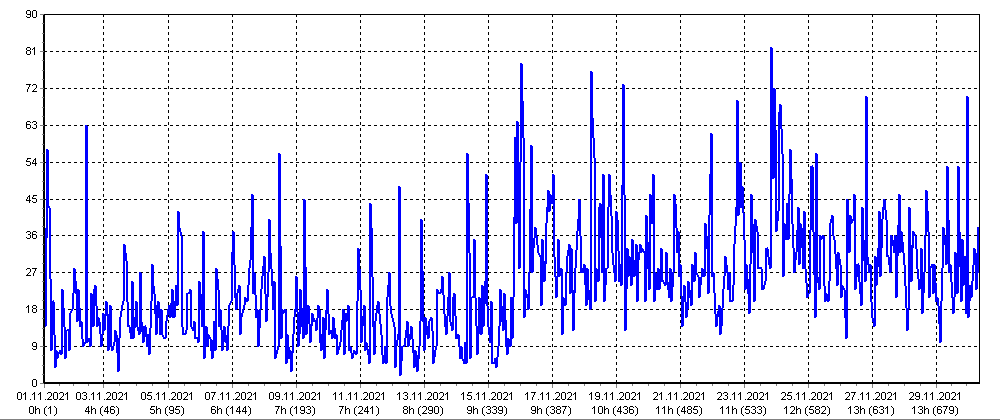
Figure 2 – Radio meteor echo counts recorded at 88.6 MHz during November 2021.
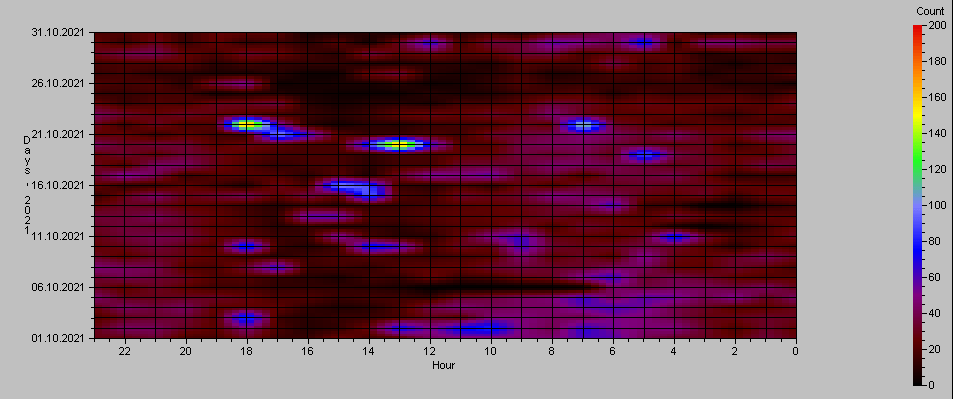
Figure 3 – Heatmap for radio meteor echo counts recorded at 88.6 MHz during October 2021.
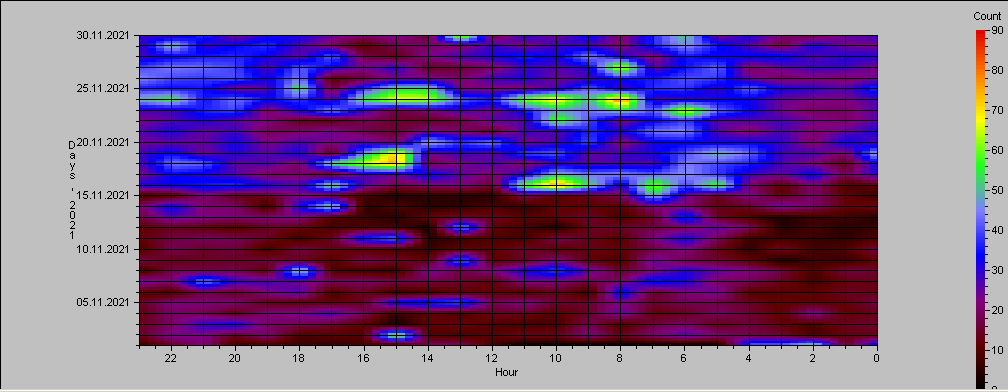
Figure 4 – Heatmap for radio meteor echo counts at 88.6 MHz during November 2021.
3 Listening to radio echoes on 88.6 MHz
Listening to the radio signals 1 to 3 times a day for one hour was done in order to control the level of the hourly rates, as well as to distinguish between periods of tropospheric passage and other natural radio interference. The total effective listening time was 64 hours in October and 34 hours in November.
The October activity graph shows an increase in signal activity around the middle of the month. The peak around October 21 is associated with the Orionid (#0008) maximum, a weaker peak around October 23–24 may be associated with a secondary Orionid peak, perhaps on top of the LMI (#0022) minor shower maximum.
The activity of the new OZP (#1131) shower could not be detected because its activity period was limited to only few hours and the total number of OZP orbits was very low. In the morning of October 24, from 05h02m to 06h02m local time I heard 93 music or speech signals reflected by meteors, whereas in the morning of October 23 the activity was less with 64 signals per hour, and earlier on October 22 with 46 signals in the morning. There are no morning data for October 25, only evening data. On October 26 in the morning, I heard 56 signals per hour, and on October 27, 53 signals per hour. The enhanced activity in the morning of October 24 may have been caused by a late sub-maximum of the Orionids.
For November, there is some weak peak of activity around November 16, probably related to the Leonids (#0013).
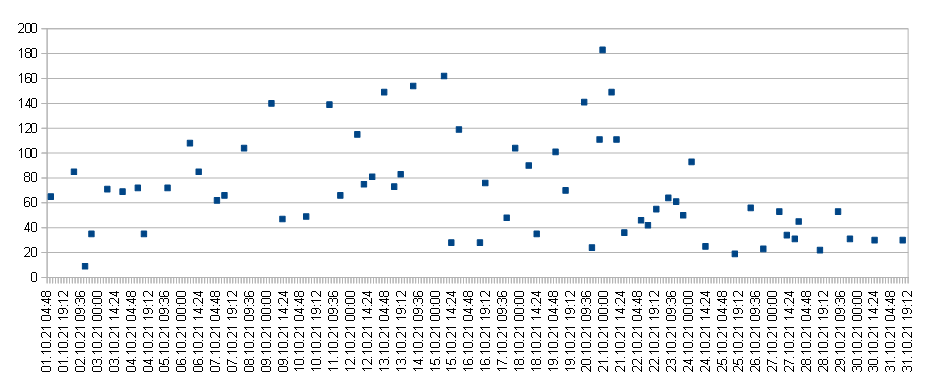
Figure 5 – The calculated hourly numbers of meteor echoes obtained by listening to the radio signals during October 2021.
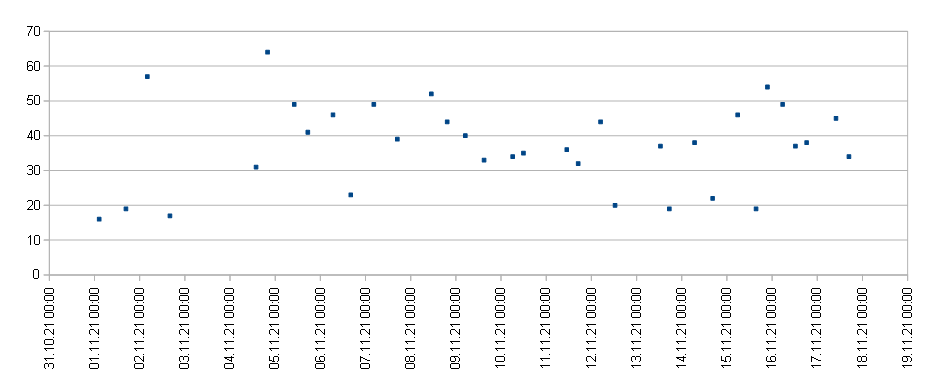
Figure 6 – The calculated hourly numbers of meteor echoes obtained by listening to the radio signals during November 2021.
4 Preliminary CAMS Data
Figures 7 and 8 show the total daily activity of meteors obtained by the CAMS video networks data (Jenniskens et al., 2011). For October and November, there is a noticeable correlation between the activity level of sporadic meteors and the activity level of shower meteors. I used the preliminary CAMS data as available on the website on December 20, 2021.
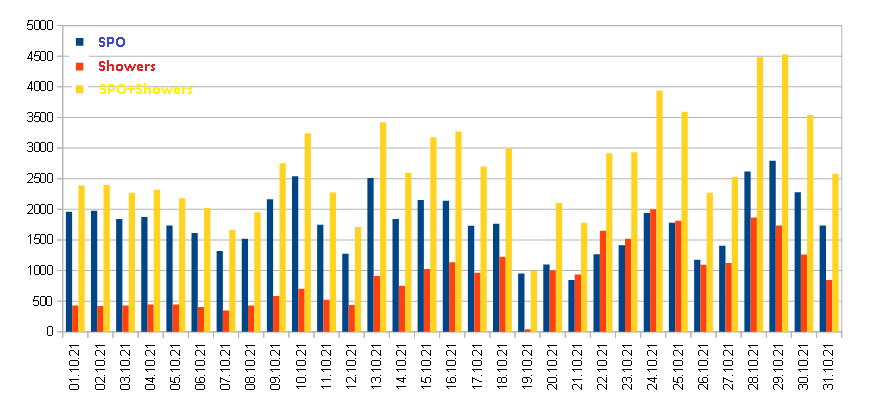
Figure 7 – Daily number of orbits recorded by CAMS video networks in October 2021, yellow bars are the total number of orbits.
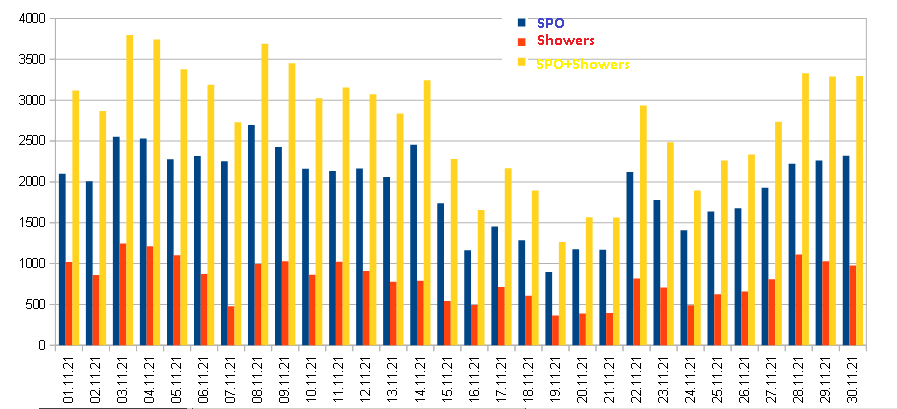
Figure 8 – Daily number of orbits recorded by CAMS video networks in November 2021, yellow bars are the total number of orbits.
CAMS data had several dates with enhanced activity for instance October 10, 13, 16, 18, 22, 24 and 28. October 10 had 204 STA (#0002) orbits, as well as an increase in the number of detected showers. On October 13, there was a peak of minor shower XAR (#0624) with 210 orbits and a secondary peak with 188 STA (#0002) orbits. Peaks between October 16 and 22 were due to a marked increase in Orionid activity. The peak on 24 October is the main Orionid maximum with 1557 orbits, which is in disagreement with the IMO shower calendar that lists the peak on 21 October. The peak on October 28 can be explained by some increase in the activity of the sporadic background, ORI (#0008), NUE (#0337), LUM (#0524), TAR (#0630) and, to less extent, the activity by some other minor showers.
CAMS data for November had November 3, 8–9, 11, 17, 22, 28 with peaks in the activity of some meteor showers. The peak on November 3 is associated with some increase in activity of various meteor showers like STA (#0002), NTA (#0017), NUE (#0337), CTA (#0388), NET (#0632), STS (#0628). On November 8–9, different radiants of the Taurid complex displayed enhanced activity. On November 11, there was a maximum of ATS (#0629) radiant with 212 orbits detected. On November 17, there was a maximum of LEO (#0013) activity with 308 orbits detected. On November 22 the video networks registered some increase of activity of LEO, NTA, NOO, and also there was a burst of AND (#0018) activity. On November 28, there was unusual activity from the Andromedids AND (#0018) with 235 orbits detected and further some enhanced activity for the meteor showers NOO (#0250) and HYD (#0016).
Figures 9 and 10 show the total numbers of meteor showers detected by CAMS on a daily basis.
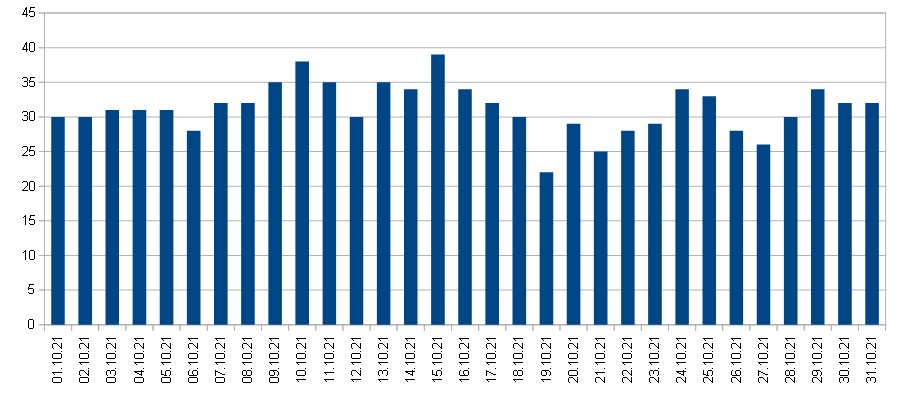
Figure 9 – Numbers of meteor showers detected by CAMS video networks in October 2021.
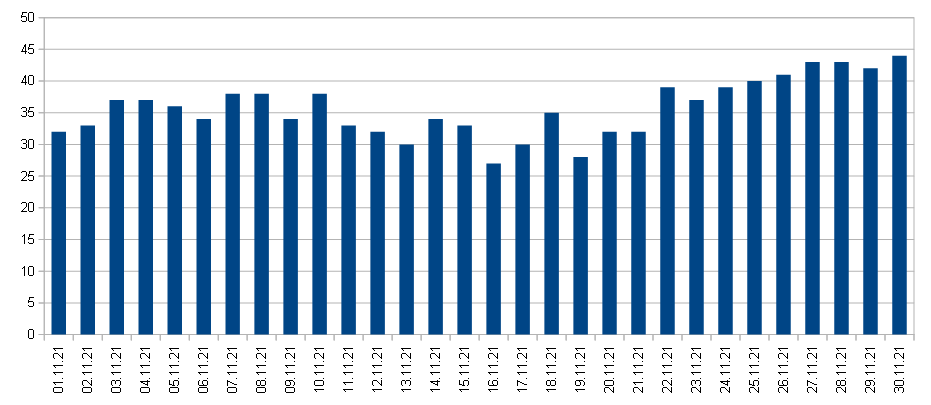
Figure 10 – Numbers of meteor showers detected by CAMS video networks in November 2021.
5 Conclusion
The generalized data of radio observations obtained by automatic detection of meteor echoes and by listening for meteor echoes show a satisfactory correlation between them and the CAMS video network data. The reason for a less good correlation of the data may be the difference in the masses of meteoroids, since the radio method registers smaller particles, while the video networks record larger meteoroid particles. The second reason is that radio methods do not depend on weather conditions and allow to obtain a continuous time coverage with observational series, whereas video methods strongly depend on weather conditions interfering with meteor statics. If each night at all CAMS observing sites were clear, the correlation between radio and video methods would be excellent.
Acknowledgment
I would like to thank Sergey Dubrovsky for the software he developed for data analysis and processing of radio observations (software Rameda). I thank Carol from Poland for the Metan software. Thanks to Paul Roggemans for his help in the lay-out and the correction of this article.
References
Jenniskens P., Gural P. S., Dynneson L., Grigsby B. J., Newman K. E., Borden M., Koop M., Holman D. (2011). “CAMS: Cameras for Allsky Meteor Surveillance to establish minor meteor showers”. Icarus, 216, 40–61.
Rendtel J. (2020). “Meteor Shower Calendar”. IMO.

